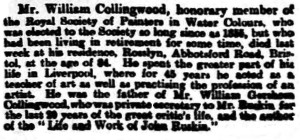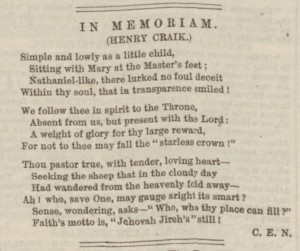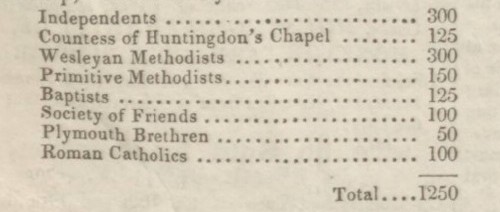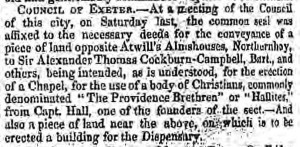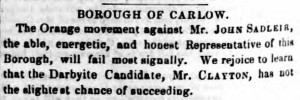Auch am Ende dieses Jahres möchte ich wieder die in den letzten zwölf Monaten erschienenen Veröffentlichungen zur Brüderbewegung übersichtlich zusammenzustellen und kurz kommentieren bzw. einordnen.
In die Bibliografie von 2019 habe ich inzwischen übrigens nicht weniger als 15 Nachträge aufgenommen: 11 Bücher (Cargill/Brown, Darby/Wigram, Ennis, Houston, Marzone, McLennan, Pickering, Riedel, Smith, Till, Yarrall) und 4 Aufsätze (Bauer/Metzger, King, Liese, Noble). Auch in der Bibliografie von 2018 waren noch zwei Aufsätze nachzutragen (Jabini und Völkening).
BÜCHER
 Susan Appleby: Search for a Soul. Oldbury, Australien (Linellen Press) 2020. 352 Seiten. ISBN 978-1-922343-27-7.
Susan Appleby: Search for a Soul. Oldbury, Australien (Linellen Press) 2020. 352 Seiten. ISBN 978-1-922343-27-7.
Ein weiterer Beitrag zum seit der Jahrtausendwende boomenden Genre der Raven-Taylor-Aussteigerliteratur. Im Falle der 1940 geborenen Engländerin Susan Appleby liegt der „Ausstieg“ allerdings bereits lange zurück: Sie wurde 1961 ausgeschlossen, weil sie sich in einer Zusammenkunft, in der über den Ausschluss ihrer Mutter verhandelt wurde, Notizen gemacht hatte und nicht bereit war, diese zu vernichten. (Ihr Vater war schon knapp zwei Jahre vorher ausgeschlossen worden, weil er sich weigerte, die außenstehende Person zu benennen, deren Spende die Heizung des Versammlungsraums finanziert hatte!) Die Erinnerungen an die Raven-Taylor-Zeit, bereits 1970 niedergeschrieben, nehmen etwa die Hälfte des Buches ein; die zweite Hälfte führt bis in die Gegenwart. Im Unterschied zu vielen anderen Aussteigern hat sich die Autorin nicht vom christlichen Glauben abgewandt, sondern gehört seit ihrer Heirat 1968 der anglikanischen Kirche an.
Ken Barrett (Hrsg.): En España por amor al Señor. 150 años del movimiento de los Hermanos. Madrid (Centro Evangélico de Formación Bíblica) 2020. 235 Seiten. ISBN 978-84-120474-2-4.
Eine Geschichte der Offenen Brüder in Spanien.
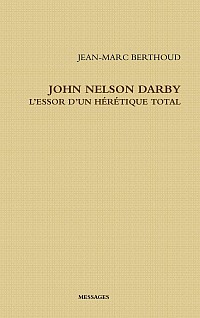 Jean-Marc Berthoud: John Nelson Darby. L’essor d’un hérétique total. Lausanne (Éditions Messages) 2020. 162 Seiten. ISBN 978-0-244-87512-1.
Jean-Marc Berthoud: John Nelson Darby. L’essor d’un hérétique total. Lausanne (Éditions Messages) 2020. 162 Seiten. ISBN 978-0-244-87512-1.
Der Untertitel „Aufstieg eines totalen Irrlehrers“ macht bereits deutlich, dass es sich hier nicht um ein sachlich informierendes, sondern um ein kritisches, wenn nicht polemisches Werk handelt. Im Zentrum stehen John Nelson Darbys Jahre in Lausanne von 1840 bis 1845, wo er eine „radikale Neuorientierung des christlichen Glaubens“ herbeizuführen versucht habe und damit zum Wegbereiter Satans geworden sei. Der Autor selbst ist offenbar Calvinist oder reformierter Baptist. Als Anhang zu seinen etwa 70-seitigen Darlegungen druckt er auf ca. 30 Seiten übersetzte Auszüge aus Thomas Croskerys Catechism on the Doctrines of the Plymouth Brethren (1879) sowie einen kurzen eigenen Kommentar zu Römer 11 ab. Eine knapp 20-seitige systematische Bibliografie beschließt den Band.
 Wolfgang Bühne: Siegfried Koll. Der verfolgte, aber nicht verlassene Deutsch-Chinese. Bielefeld (CLV) 2020. 154 Seiten. ISBN 978-3-86699-757-8.
Wolfgang Bühne: Siegfried Koll. Der verfolgte, aber nicht verlassene Deutsch-Chinese. Bielefeld (CLV) 2020. 154 Seiten. ISBN 978-3-86699-757-8.
Gustav und Lili Koll, ein deutsches Missionarsehepaar der Geschlossenen Brüder, adoptierten 1929 in China einen knapp zweijährigen Waisenjungen und gaben ihm den Namen Siegfried. Drei Jahre seiner Kindheit (1933–36) verbrachte er mit seiner Adoptivmutter in Deutschland. Als junger Erwachsener wurde er aus politischen Gründen verhaftet und kam während seiner zweijährigen Gefangenschaft zum Glauben. Nach der kommunistischen Machtübernahme mussten seine Adoptiveltern 1952 China verlassen, woraufhin Siegfried sich der Gemeinde von Wang Ming-Tao anschloss. 1958 wurde er um seines Glaubens willen erneut interniert und verbrachte die folgenden 20 Jahre in Arbeitslagern. 1978 entlassen, wandte er sich vollzeitlich der Evangelisation und Verkündigung zu. Mitte der 1980er Jahre kam er wieder mit den deutschen Geschlossenen Brüdern in Kontakt, die ihn fortan unterstützten. Er starb 2010.
Die Biografie ist lebendig und gut lesbar geschrieben und durch acht farbige Bildseiten angereichert. Den zweiten Teil des Buches bildet eine 42-seitige Abhandlung über „Christen in China – gestern und heute“. Laut Wolfgang Bühne sind aktuelle Meldungen über Christenverfolgungen in China oft übertrieben; Gemeinden, die in ihrer Verkündigung auf politische Themen verzichteten, bekämen „mit wenigen Ausnahmen keine Probleme“ (S. 129). Ein Exkurs über die um 1991 entstandene chinesische Sondergemeinschaft „Kirche des Allmächtigen Gottes“ und ein Text von Siegfried Koll selbst über die Situation der Hausgemeinden in Nordchina runden den Band ab.
Charles E. Cotherman: To Think Christianly. A History of L’Abri, Regent College, and the Christian Study Center Movement. Foreword by Kenneth G. Elzinga. Downers Grove, IL (InterVarsity Press) 2020. xvii, 305 Seiten. ISBN 978-0-8308-5282-6.
Von brüdergeschichtlichem Interesse ist vor allem Kapitel 2 über das von Offenen Brüdern gegründete Regent College in Vancouver.
Jean DeBernardi: Christian Circulations: Global Christianity and the Local Church in Penang and Singapore, 1819–2000. Singapur (National University of Singapore Press) 2020. xvi, 430 Seiten. ISBN 978-981-3251-09-0.
Auch wenn es aus dem Buchtitel nicht direkt hervorgeht, handelt es sich hier laut Verlagstext um eine „überregionale Geschichte der Brüderbewegung und ihrer Stellung in Singapur und Malaysia“. Die Autorin ist Professorin für Anthropologie an der Universität von Alberta (Kanada).
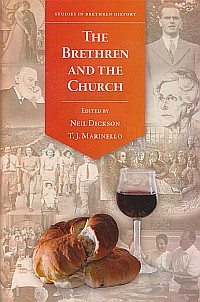 Neil Dickson / T[homas] J[ohn] Marinello (Hrsg.): The Brethren and the Church. Studies in Brethren History. Glasgow (Brethren Archivists and Historians Network) 2020. xviii, 472 Seiten. ISBN 978-1-9160130-2-5.
Neil Dickson / T[homas] J[ohn] Marinello (Hrsg.): The Brethren and the Church. Studies in Brethren History. Glasgow (Brethren Archivists and Historians Network) 2020. xviii, 472 Seiten. ISBN 978-1-9160130-2-5.
Der sechste Band der Reihe Studies in Brethren History versammelt die Vorträge der BAHN-Konferenzen von 2017 und 2019:
■ Timothy C. F. Stunt: „The Early Ecclesiastical Identity of John Nelson Darby“ (S. 7–22)
■ Neil Summerton: „Was George Müller Brethren?“ (S. 23–46)
■ Ian Randall: „‘I felt bound to receive all true Christians as brethren’: The Expansive Ecclesiology of Andrew Jukes (1815–1901)“ (S. 47–62)
■ Elisabeth Wilson: „‘Gathering and Receiving’: A Reassessment of the Role of Rice Thomas Hopkins in Australia“ (S. 63–77)
■ Roger N. Holden: „The Chicago Notes Controversy: James Taylor and Developing Views of the Assembly amongst the Exclusive Brethren“ (S. 79–101)
■ James I. Fazio: „The Elements and Ordinances of Proto-Brethren Assemblies, 1818–20“ (S. 105–115)
■ Crawford Gribben: „Brethren and the Legacy of the Reformation“ (S. 117–138)
■ David A. Smith: „Brethren Ecclesiology in Historical Perspective“ (S. 139–153)
■ Tim Grass: „What’s in a Name? Theology and the Names of Brethren Places of Worship“ (S. 155–165)
■ Mark R. Stevenson: „The Office of the Elder in Brethren History“ (S. 167–183)
■ Neil Summerton: „Charisma and Organization: An Unresolved Theological Tension in the Open Brethren“ (S. 185–200)
■ Neil Dickson: „The Body and the Circle: Church Metaphors in the Open Brethren“ (S. 201–215)
■ Peter Conlan: „‘What are you doing for Christ in Birmingham?’ The History, Strategy, and Legacy of a Missional Brethren Assembly Founded by Alexis Jacob in 1924“ (S. 217–227)
■ Tim Grass: „Ecclesiology in a Hostile Environment: Brethren in Franco’s Spain“ (S. 229–243)
■ Elisabeth Wilson: „‘A revolution in thought and practice’: The Reconciliation of the Hopkins and Open Meetings in Australia, 1950s–1960s“ (S. 245–257)
■ T[homas] J[ohn] Marinello: „New Brethren in Flanders: Changing Views of Their Identity“ (S. 259–274)
■ Neil Dickson: „‘Sweet feast of love divine’: The Lord’s Supper in Brethren History“ (S. 277–306)
■ Mark R. Stevenson: „The Language of Worship: Brethren Use of the Song of Solomon“ (S. 307–321)
■ Neil Summerton: „Charisma and Organization: Institutionalism in the Open Brethren in the United Kingdom“ (S. 323–349)
■ Roger Shuff Yatol: „Romantic Expressions: Brethren and the Value of Art“ (S. 351–370)
■ Jean DeBernardi: „Startling, Stubborn Things: Prayer and the Ministry of Deliverance in China and Southeast Asia“ (S. 371–387)
■ Roger N. Holden: „Household Baptism, not Infant Baptism: Taylorite Exclusive Brethren and Baptism“ (S. 389–412)
■ Kenneth B. E. Roxburgh: „Preaching among the Open Brethren in the Mid-Twentieth Century“ (S. 413–426)
■ T[homas] J[ohn] Marinello: „Opening of the Closed: The Worldwide Breakup of the Kelly-Lowe-Continental Brethren at the End of the Twentieth Century“ (S. 427–448)
■ Peter Lineham: „Open Worship and its Decline: Changes in Brethren Identity in New Zealand“ (S. 449–472)
Von den zahlreichen interessanten Aufsätzen dieses Bandes möchte ich insbesondere den vorletzten hervorheben, in dem die internationale Spaltung der Kelly-Lowe-Continental-Brüder (in Deutschland als Geschlossene Brüder oder „Alte Versammlung“ bekannt) in den 1990er Jahren erstmals akademisch untersucht wird. Marinello unterscheidet metaphorisch drei Phasen: „The gathering storm“ (umstrittene Ausschlüsse in Deutschland, den USA und Frankreich ab 1985), „The rumble of thunder“ (umstrittener Ausschluss in Den Helder 1990, Vorgänge in Lofer 1991 u.a.) und „The storm strikes“ (Trennungsbrief aus Den Helder 1995 mit den weltweiten Folgen). Dass sich in Deutschland ca. 30 % von den Geschlossenen Brüdern gelöst hätten (S. 447), ist wohl etwas zu hoch gegriffen.
 Klaus Güntzschel (Hrsg.): William Gibson Sloan. Einer geht hin – Erweckung auf den Färöern. Lychen (Daniel) 2020. 111 Seiten. ISBN 978-3-945515-38-9.
Klaus Güntzschel (Hrsg.): William Gibson Sloan. Einer geht hin – Erweckung auf den Färöern. Lychen (Daniel) 2020. 111 Seiten. ISBN 978-3-945515-38-9.
Der Schotte William Gibson Sloan (1838–1914) gilt als Begründer der (Offenen) Brüderbewegung auf den Färöer-Inseln. Seine 1865 begonnene Evangelisationsarbeit führte dazu, dass die Färöer heute den weltweit größten „Brüder“-Anteil an der Gesamtbevölkerung aufweisen (je nach Quelle zwischen 7 und 15 %). 1993 erschien in einem färöischen Verlag eine ca. 270-seitige englischsprachige Biografie Sloans (Fisherman of Faroe von Fred Kelling), die für das vorliegende Buch „zunächst übersetzt, dann aber komplett überarbeitet und in diesem Zuge stark gekürzt“ wurde (S. 10). Der Band erhebt keinen wissenschaftlichen Anspruch, sondern verfolgt in erster Linie praktisch-erbauliche Ziele. Durch das große Format und die zahlreichen Illustrationen – darunter viele eigens angefertigte Landschaftsaufnahmen von den Färöern – wirkt er streckenweise fast wie ein Bildband.
William Hall: Critique Of The Brethren. An examination of ‘Scripturally’ claims for Scriptural practices. How Biblical are Brethren claims Regarding Assembly Distinctive And Principles of Gathering? [sic] Ohne Ort (Selbstverlag/Amazon) 2020. 108 Seiten. ISBN 979-8-68314774-7.
Vorschläge zu einer Reform der Offenen Brüdergemeinden, zuerst vorgetragen auf der National Elders and Workers Conference in Kingston, Jamaika im Juni 1991 (daher der Umschlagtitel Looking In-depth at The Brethren Movement in Jamaica 1991).
Patricia Hazell: The Kennard Story. [North Manly, Australien] (Selbstverlag) 2020. 120 Seiten.
Die englische Familie Kennard, die bereits zu Darbys Lebzeiten den Geschlossenen Brüdern und später den Raven-Brüdern angehörte, wanderte 1911/13 nach Australien aus. Das Buch zeichnet ihre Geschichte von Mitte des 19. Jahrhunderts bis in die Gegenwart nach, einschließlich der Raven’schen Spaltungen, die sich auch auf die Familie auswirkten. Die Autorin ist Familienmitglied, wuchs aber nicht mehr unter den „Brüdern“ auf.
Robert Plant (Hrsg.): They Finished Their Course. Volume 5. Kilmarnock (Ritchie) 2020. 711 Seiten. ISBN 978-1-912522-93-4.
Kurzbiografien von fünfzig in den 2010er Jahren verstorbenen (konservativen) Offenen Brüdern, darunter David W. Gooding (S. 193–205) und Harold S. Paisley (S. 457–467), ergänzt durch vier Nachträge aus früheren Jahrzehnten.
Jessie Shedden: These Boots Were Made For Walking. Ohne Ort (Selbstverlag/Amazon) 2020. xiii, 157 Seiten. ISBN 979-8-68367-306-2. — Überarbeitete Ausgabe: Tomorrow’s Not Promised. Ohne Ort (Selbstverlag/Amazon) 2020. xxvii, 223 Seiten. ISBN 979-8-69848324-3.
Die jüngste Raven-Taylor-Aussteigerbiografie stammt auch von der bisher jüngsten Autorin: Die 1986 geborene Engländerin Jessie Shedden verließ die Raven-Taylor-Symington-Hales-Brüder erst Ende 2017. Nach Teilnahme an einem Kurs „40 Days to a Finished Book“ schrieb sie ihr Buch in 40 Tagen, brachte jedoch bereits einen Monat später unter neuem Titel eine überarbeitete und erweiterte Version davon heraus. Es bietet den wohl aktuellsten Einblick in das Innenleben dieser Randgruppe der Brüderbewegung.
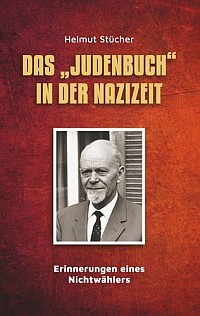 Helmut Stücher [Hrsg.]: Das „Judenbuch“ in der Nazizeit. Erinnerungen eines Nichtwählers. Norderstedt (BoD) 2020. 179 Seiten. ISBN 978-3-7504-5263-3.
Helmut Stücher [Hrsg.]: Das „Judenbuch“ in der Nazizeit. Erinnerungen eines Nichtwählers. Norderstedt (BoD) 2020. 179 Seiten. ISBN 978-3-7504-5263-3.
Wilhelm Stücher (1898–1969) war einer der bekanntesten Gegner des BfC und einer der wenigen „Brüder“, die den antichristlichen Charakter des NS-Regimes deutlich erkannten. Etwa ein Jahr vor seinem Tod besprach er ein Tonband mit Erinnerungen an die Zeit des Versammlungsverbots. Sein Sohn Helmut (* 1933) transkribierte und überarbeitete die Aufzeichnungen und ergänzte sie um einige Briefe und Dokumente. Unter dem Titel „Erinnerungen eines Nichtbündlers“ (aus der Nazizeit) kursiert dieses Typoskript seither vor allem in Kreisen der Geschlossenen Brüder und wurde auch von Historikern wiederholt als Quelle herangezogen.
Dass diese Erinnerungen nun – über 50 Jahre nach ihrer Niederschrift – erstmals auch in Buchform zugänglich gemacht werden, ist grundsätzlich verdienstvoll. Allerdings löst bereits der Umschlag Verwunderung aus: Offenbar meinte der Herausgeber einen für eine breitere Leserschaft verständlichen Titel finden zu müssen und ersetzte daher „Nichtbündler“ durch „Nichtwähler“ – das war Wilhelm Stücher sicher auch, aber es ist kaum das Hauptthema des Buches. Auch das in den Obertitel gesetzte Wort „Judenbuch“ (gemeint ist die Bibel) kommt in Stüchers Erinnerungen nur an einer einzigen Stelle vor, nämlich auf S. 24 (Typoskript S. 10). Befremdlich wirkt außerdem, dass der Name Wilhelm Stücher auf dem Titelblatt überhaupt nicht auftaucht, sondern Helmut Stücher als Autor firmiert – erst im Vorwort (S. 7) erfährt der Leser, dass es sich um die Erinnerungen seines Vaters handelt.
Das Vorwort wirft noch weitere Fragen auf. Im Originaltyposkript endete es mit folgendem Absatz (Fettdruck hinzugefügt):
Allerdings bedurften die Erzählungen, wie sie aufgezeichnet waren, einer Überarbeitung, was ich jüngst übernommen habe. Dabei konnte ich aus den noch vorhandenen Korrespondenzen aus jener Zeit Ergänzungen einfügen. Es erschien mir im Interesse eigener Urteilsbildung nützlich, von meinem Vater angeführte Briefe und Schriften zum Teil wörtlich wiederzugeben, wodurch m.E. dem Leser ein objektiverer Einblick in die Entwicklung der Dinge gegeben wird, wie sie durch das Aufkommen und Wirken des nationalsozialistischen Geistes im Kreise der „Brüder“ bestimmt wurde.
In der Buchfassung heißt es stattdessen lapidar:
Diese Memoiren sind auf Tonband gesprochen worden und später davon abgeschrieben, so daß es sich um das gesprochene Wort handelt, das nicht mehr überarbeitet wurde.
Das ist nicht nur eine erhebliche Verkürzung, sondern im Grunde eine Verkehrung ins Gegenteil: „Bedurften die Erzählungen“ nun „einer Überarbeitung“, die der herausgebende Sohn auch vornahm, oder wurde „das gesprochene Wort […] nicht mehr überarbeitet“? Dem Originaltyposkript wird man sicher mehr Glauben schenken dürfen als einem Nachdruck nach über 50 Jahren, und tatsächlich klingt der Text auch kaum wie eine wortwörtliche Mitschrift, aber warum dann diese Änderung im Vorwort?
Abweichungen vom Typoskript finden sich auch im Hauptteil des Buches gelegentlich. Manche davon beruhen vermutlich auf Abschreibversehen (z.B. „wichtig“ statt „richtig“, S. 12; „Am nächsten Morgen“ statt „Am nächsten Mittag“, S. 22; „sehen“ statt „stehen“, S. 60; „in einer Brüderversammlung“ statt „in einer großen Brüderversammlung“, S. 94; „wollten“ statt „sollten“, S. 127 [zweimal]; „am Vortag“ statt „am Vormittag“, S. 154; „im kleineren Kreis“ statt „im kleinsten Kreis“, S. 164), bei anderen ist die erneut eingreifende Hand eines Überarbeiters zu erkennen (z.B. „Gesprächen am Mittagstisch“ statt „Mittagstischgesprächen“, S. 20; „der Mitunterzeichner Ihres Briefes“ statt „der Bruder, dessen Namen ich aus der Unterschrift als Mitunterzeichner Ihres Briefes nicht entnehmen kann“, S. 16). An mindestens zwei Stellen sind mir Zusätze in Klammern aufgefallen, die im Typoskript keine Grundlage haben („Helmut geb.“, S. 19; „Bordellbesuch“, S. 91).
Der gravierendste, kaum zu entschuldigende Mangel des Buches besteht allerdings darin, dass dem Herausgeber gar kein vollständiges Exemplar des Typoskripts mehr vorlag. An zwei Stellen der Erinnerungen sollten externe Dokumente eingefügt werden (S. 27: Kietzells Betrifft: Christen ohne Sonderbekenntnis; S. 53: Brief Darbys über die Beteiligung an Wahlen), die hier aber fehlen, da der Herausgeber sie (wie er vermutet) verliehen und nicht wieder zurückbekommen hat. (Dafür ist auf S. 63–66 die Barmer Erklärung abgedruckt, die Wilhelm Stücher nirgendwo erwähnt.) Ohne jede Begründung fehlt außerdem die letzte Seite des Typoskripts (96) – man wird wahrscheinlich davon ausgehen können, dass dies dem Herausgeber gar nicht bewusst war. Dadurch enden die Erinnerungen recht abrupt („Anschließend an die Gerichtsverhandlung kamen wir in meinem Hause mit noch anderen Geschwistern aus dem Dillkreis zusammen“), und es wirkt nachvollziehbar, dass der Herausgeber zur Abrundung noch ein eigenes Nachwort angehängt hat. Den Text der ursprünglichen Seite 96 stelle ich hier zum Download zur Verfügung.
Wilhelm Stüchers Erinnerungen eines Nichtbündlers sind eine wichtige Quelle zur Geschichte der Brüderbewegung im Dritten Reich. Die vorliegende Edition genügt den Ansprüchen einer Leseausgabe (wenn man das Fehlen der letzten Seite verschmerzen kann), ist aufgrund der beschriebenen Ungenauigkeiten aber wissenschaftlich wohl nicht zitierfähig.
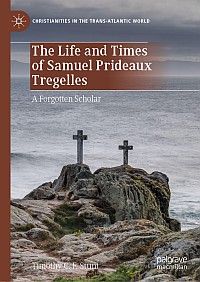 Timothy C. F. Stunt: The Life and Times of Samuel Prideaux Tregelles. A Forgotten Scholar. Christianities in the Trans-Atlantic World. Cham (Palgrave Macmillan) 2020. xviii, 282 Seiten. ISBN 978-3-030-32265-6.
Timothy C. F. Stunt: The Life and Times of Samuel Prideaux Tregelles. A Forgotten Scholar. Christianities in the Trans-Atlantic World. Cham (Palgrave Macmillan) 2020. xviii, 282 Seiten. ISBN 978-3-030-32265-6.
Samuel Prideaux Tregelles (1813–1875) kommt in jeder Brüdergeschichte vor und ist auch für die Geschichte der neutestamentlichen Textkritik bedeutsam, doch über sein Leben war bisher relativ wenig bekannt. Timothy Stunt hat diese Lücke nun überzeugend geschlossen. In gewohnt akribischer Manier verfolgt er Tregelles’ Weg von seiner Kindheit in einer Quäkerfamilie Cornwalls über seine autodidaktische Bildung in Wales und seine Forschungsreisen auf den europäischen Kontinent bis hin zu seinem krönenden Lebenswerk, einer 7-bändigen Ausgabe des griechischen Neuen Testaments. Auch seinem Verhältnis zu den „Brüdern“, denen er sich 1835 anschloss, wird gebührende Aufmerksamkeit geschenkt. Tregelles stellte sich bei der Spaltung von 1845 bekanntlich auf die Seite seines Freundes Benjamin Wills Newton und hielt diesem bis an sein Lebensende die Treue. Als Newton 1847 Plymouth verließ, blieb Tregelles in dessen Gemeinde (Ebrington Street, später Compton Street), die aber in den folgenden Jahren ihren „Brüder“-Charakter mehr und mehr verlor. 1863 stellte sie – mit Tregelles’ Zustimmung – einen gewissen William Elliot als Pastor an, doch dieser erwies sich mit der Zeit als so dominant und unbeherrscht, dass Tregelles und etliche andere 1866 die Gemeinde verließen. Ob er danach der presbyterianischen oder der anglikanischen Kirche beitrat (für beides gibt es Hinweise), kann auch Stunt nicht mit Bestimmtheit sagen. In jedem Fall wird sein Buch für viele Jahre das Standardwerk über Tregelles bleiben.
AUFSÄTZE
 Ausgabe 16 (2020) der Brethren Historical Review enthält (neben etlichen Rezensionen) die folgenden Beiträge:
Ausgabe 16 (2020) der Brethren Historical Review enthält (neben etlichen Rezensionen) die folgenden Beiträge:
■ (Timothy C. F. Stunt:) „Early Brethren as Observed by an Outsider, c. 1838“ (S. 1–4)
■ Neil Summerton: „Porous Frontier or Hard Border? George Müller and Brethren Identity“ (S. 5–32)
■ Gordon W. Simmonds: „Science and Medicine in the Exclusive Brethren“ (S. 33–41)
■ Timothy C. F. Stunt: „John Townsend Trench (1834–1909)“ (S. 42–51)
■ Neil Dickson: „‘With hesitating heart’: William Blane (1858–1936)“ (S. 52–91)
■ Christina Evangelina Lawrence: „Thomas Baird (1861–1932): Advocate of Mission“ (S. 92–115)
■ Roger Shuff Yatol: „In Ruskin’s Shadow: Darbyite Brethren in Coniston 1895–1975“ (S. 116–138)
■ P[aul] David Wilkin: „Dr Walter Fisher, an Ilomba, and the Spanish ’Flu Pandemic“ (S. 139–157)
■ Michael Schneider: „New Writing on Brethren History“ (S. 158–161)
■ Doug Engle: „Robert Henry Baylis (1924–2020)“ (S. 198–201)
■ Neil Summerton: „Brian Stanley Mawhinney (Lord Mawhinney of Peterborough) 1940–2019“ (S. 202–208)
■ Peter Conlan: „Peter Maiden 8 April 1948 – 14 July 2020“ (S. 209–215)
Howard A. Barnes: „William Henry Bennet (1843–1920)“. In: Precious Seed 75 (2020), Heft 3, S. 26.
Kurzes Lebensbild zum 100. Todestag von William Henry Bennet, der von 1891 bis zu seinem Tod Mitherausgeber von Echoes of Service war (auch online).
Howard A. Barnes: „Charles Henry Mackintosh“. In: Precious Seed 75 (2020), Heft 4, S. 15.
Kurzes Lebensbild zum 200. Geburtstag des bekannten Geschlossenen Bruders (auch online). Dass Mackintosh sich „in den letzten 15 Jahren seines Lebens nicht an den Spaltungen und lehrmäßigen Turbulenzen unter den exklusiven Versammlungen beteiligt“ hätte, kann man so wohl nicht stehen lassen – er war ein entschiedener Kritiker Grants und Stuarts (vgl. Noel, Bd. 2, S. 440f.) und bekanntlich auch ein Verteidiger Ravens.
Ulrich Brockhaus: „150 Jahre Elberfelder Bibel: Unbestechlich texttreu“. In: ideaSpektrum Spezial 6/2020 – lesen, hören & sehen (Einhefter in ideaSpektrum 41/2020), S. 12–14.
Die erste Gesamtausgabe der Elberfelder Bibel erschien zwar erst 1871, aber die Arbeit daran wurde bereits 1870 (also vor 150 Jahren) abgeschlossen, deshalb bat die Nachrichtenagentur idea den früheren Verleger und führenden Revisionsmitarbeiter Dr. Ulrich Brockhaus um einen Beitrag über Geschichte und Besonderheiten dieser Bibelübersetzung. Abonnenten von ideaSpektrum können den Beitrag auch online lesen. Zusätzlich produzierte idea ein dreiminütiges Video mit Ulrich Brockhaus zu diesem Thema.
Wolfgang Bühne: „50 Jahre ‚fest und treu‘“. In: fest und treu 172 (4/2020), S. 12f.
Mit etwas Verspätung (die ersten Ausgaben von fest und treu bzw. dem Vorläufer Bibelkurs erschienen bereits 1968) zeichnet der Schriftleiter hier knapp die Geschichte der Zeitschrift nach (auch online: siehe rechts das Dropdown-Menü „Dokumente zum Artikel“ – Direktverlinkungen auf PDF-Dateien sind seit dem letzten Relaunch der CLV-Website leider nicht mehr möglich!).
Sam Cairns: „Report: Gospel Folio Press. Port Colborne, Ontario, Canada“. In: Cornerstone 4 (2020), Heft 3, S. 8f.
Kurze Geschichte des kanadischen Verlags Gospel Folio Press, der den konservativen Offenen Brüdern zugerechnet wird (auch online).
Bernard Doherty: „Back at the Bar: Charity Law, Public Benefit, and a Case of Legal déjà vu for the Exclusive Brethren“. In: The Status of Religion and the Public Benefit in Charity Law. Hrsg. von Barry W. Bussey. London (Anthem Press) 2020. S. 101–126.
Im Juni 2012 verweigerte die Charity Commission for England and Wales einer Stiftung der Raven-Taylor-Symington-Hales-Brüder in Devon die Anerkennung als gemeinnützig. Nach einer heftigen politischen Kontroverse und internen Verhandlungen wurde die Entscheidung im Januar 2014 revidiert. Der Artikel untersucht diese Vorgänge und vergleicht sie mit einem früheren Rechtsstreit, in den die Raven-Brüder verwickelt waren (Holmes v Attorney General, 1981).
James I. Fazio: „Dispensational Thought as Motivation for Social Activism among Early Plymouth Brethren“. In: Journal of Ministry & Theology 24 (2020), Heft 1, S. 91–107.
Wie der Titel bereits andeutet, ist Fazio der Auffassung, dass das Motiv für soziale Aktivitäten der frühen „Brüder“ ihr Dispensationalismus gewesen sei. Als Beispiele nennt er die Missionsarbeit von Groves, Cronin und Parnell in Bagdad, die Evangelisationsarbeit von Deck in Neuseeland und die Gemeinde- und Waisenhausarbeit von Müller und Craik in Bristol (auch online).
Liselotte Frisk: „Plymouth Brethren Christian Church“. In: The SAGE Encyclopedia of the Sociology of Religion. Hrsg. von Adam Possamai und Anthony J. Blasi. Thousand Oaks, CA (SAGE Publications) 2020. Bd. 2, S. 583f.
Lexikonartikel über die Raven-Taylor-Symington-Hales-Brüder aus religionssoziologischer Sicht. Die Darstellung ist betont sachlich und neutral; jede Form von Kritik wird vermieden.
Tim Grass: „150 años de las Asambleas de Hermanos en España“. In: Edificación Cristiana 294 (Mai–August 2020), S. 27–31; 295 (September–Oktober 2020), S. 21–24.
Kurzer Überblick über die Geschichte der Offenen Brüder in Spanien.
James Craig Holte: „John Nelson Darby and Dispensationalism“. In: Imagining the End. The Apocalypse in American Popular Culture. Hrsg. von James Craig Holte. Santa Barbara, CA (ABC-Clio) 2020. S. 65f.
Im Ganzen seriöser Lexikonartikel über Darby und den Einfluss seines Dispensationalismus auf populäre amerikanische Endzeitvorstellungen. Einige Behauptungen sind zweifelhaft (z.B. dass Darby die Erfindung des Telegrafen 1844 als Zeichen der Endzeit angesehen hätte) oder direkt falsch (z.B. dass Darby die doppelte Prädestination oder die sieben Dispensationen Scofields gelehrt hätte).
Thomas D. Ice: „The Calvinist Heritage of Dispensationalism“. In: Interdisciplinary Journal on Biblical Authority 1 (2020), Heft 2, S. 119–134.
Ice will aufzeigen, dass die frühen Dispensationalisten – darunter auch die „Brüder“ Darby und Bellett – Calvinisten gewesen seien. Vermutlich identisch mit einem älteren Artikel von ca. 2009.
Jan Jensen: „Christianity, Presence, and the Problem of History: On two forms of Christian temporality in the Faroe Islands“. In: Suomen Antropologi: Journal of the Finnish Anthropological Society 45 (2020), Heft 2, S. 3–16.
Untersuchung zum Zeit- und Geschichtsverständnis einer Pfingstgemeinde und einer Brüdergemeinde auf den Färöern (auch online).
Steve Knowles: „The Plymouth Brethren Christian Church, Media Engagement and Public Benefit“. In: Ecclesial Practices 7 (2020), S. 101–116.
Nachdem einer Stiftung der Raven-Taylor-Symington-Hales-Brüder 2012 die Gemeinnützigkeit aberkannt worden war (siehe oben unter Doherty), starteten diese eine beispiellose PR-Offensive, um ihre Gemeinnützigkeit unter Beweis zu stellen. Der Artikel untersucht die zu diesem Zweck eingegangene Zusammenarbeit mit den Mainstream-Medien.
Andreas Liese: „‚Unsere Heimath ist droben‘. Heimat und Fremde in den Geschlossenen Brüdergemeinden“. In: Zeitschrift für Theologie und Gemeinde 25 (2020), S. 209–232.
Eingehende Analyse der Haltung der (englischen und deutschen) Geschlossenen Brüder zur „Welt“ (Absonderung, Politikabstinenz, Himmelsbürgertum usw.). Herangezogen werden Texte von John Nelson Darby bis Ernst-August Bremicker.
Simone Maghenzani: „The English and the Italian Bible“. In: British Protestant Missions and the Conversion of Europe, 1600–1900. Hrsg. von Simone Maghenzani und Stefano Villani. Routledge Studies in Early Modern Religious Dissents and Radicalism. New York / London (Routledge) 2021. S. 102–118.
Wiederholte Verweise auf „Brüder“, u.a. auf Piero Guicciardini (1808–1886).
Gabriele Naujoks: „David Gooding (1925–2019). Bibellehrer und Gelehrter“. In: Zeit & Schrift 23 (2020), Heft 1, S. 20–27.
Lebensbild des bekannten Alttestamentlers, der den Offenen Brüdern angehörte und viel mit John Lennox zusammenarbeitete (auch online).
Thomas Riedel: „Es ging zuerst um Gott und sein Wort. Akademisches Aufbauprogramm und Masterarbeit an der Universität von Südafrika unter Wiedenester Begleitung“. In: Offene Türen 112 (2020), Heft 4, S. 25.
Bericht über die Masterarbeit Entstehung und Entwicklung der „Elberfelder Bibel“ (Neues Testament) von der Erstübersetzung bis heute (vgl. Neuerscheinungen 2019).
Berthold Schwarz: „John Nelson Darbys Einfluss auf die Schriftauslegung in konfessionell evangelikal geprägten (Frei-)Kirchen und Gemeinden. Ein Versuch, Zusammenhänge zu verstehen“. In: Freikirchenforschung 29 (2020), S. 129–147.
Aufgrund des Obertitels könnte man eine Untersuchung darüber erwarten, welche Kirchen und Freikirchen in welchem Maße von Darbys Theologie beeinflusst wurden, aber tatsächlich handelt es sich um eine (wohlwollende) Analyse und Einordnung von Darbys Theologie selbst, speziell seines Dispensationalismus.
Manuel Seibel: „Ein Leben für seinen Meister. Henry Allan Ironside – auf dem Weg zum Herrn Jesus“. In: Folge mir nach [28] (2020), Heft 4, S. 22–26; Heft 5, S. 22–27.
Zweiteiliges Lebensbild mit praktisch-erbaulichen Nutzanwendungen (auch online: Teil 1, Teil 2). Ironsides Verbindung mit den Offenen Brüdern und sein Pastorenamt an der Moody Church werden erwartungsgemäß kritisch gesehen.
(Rebecca Styler:) „Brethren“. In: Nineteenth-Century Religion, Literature and Society. Hrsg. von Naomi Hetherington. Volume I: Traditions. Hrsg. von Rebecca Styler. Abingdon / New York (Routledge) 2020. S. 197f.
Der Band versammelt Primärtexte zu Religion, Literatur und Gesellschaft des 19. Jahrhunderts. Für den Abschnitt 6.1 „Brethren“ (S. 199–207) wurden Auszüge aus Darbys Reflections on the Ruined Condition of the Church (1841) und Groves’ bekannter Brief an Darby (1836) ausgewählt; vorangestellt ist eine Einleitung der Herausgeberin.
Elisabeth Wilson: „The Legacy of Charles Frederick Reeve“. In: International Bulletin of Mission Research 44 (2020), S. 80–91.
Der australische Indienmissionar Charles Frederick Reeve (1859–1941), dessen Leben, Persönlichkeit und Einfluss hier untersucht werden, gehörte etwa ein Jahrzehnt lang den Offenen Brüdern in Hobart (Tasmanien) an.
Für Hinweise auf weitere, von mir übersehene Neuerscheinungen bin ich dankbar!

